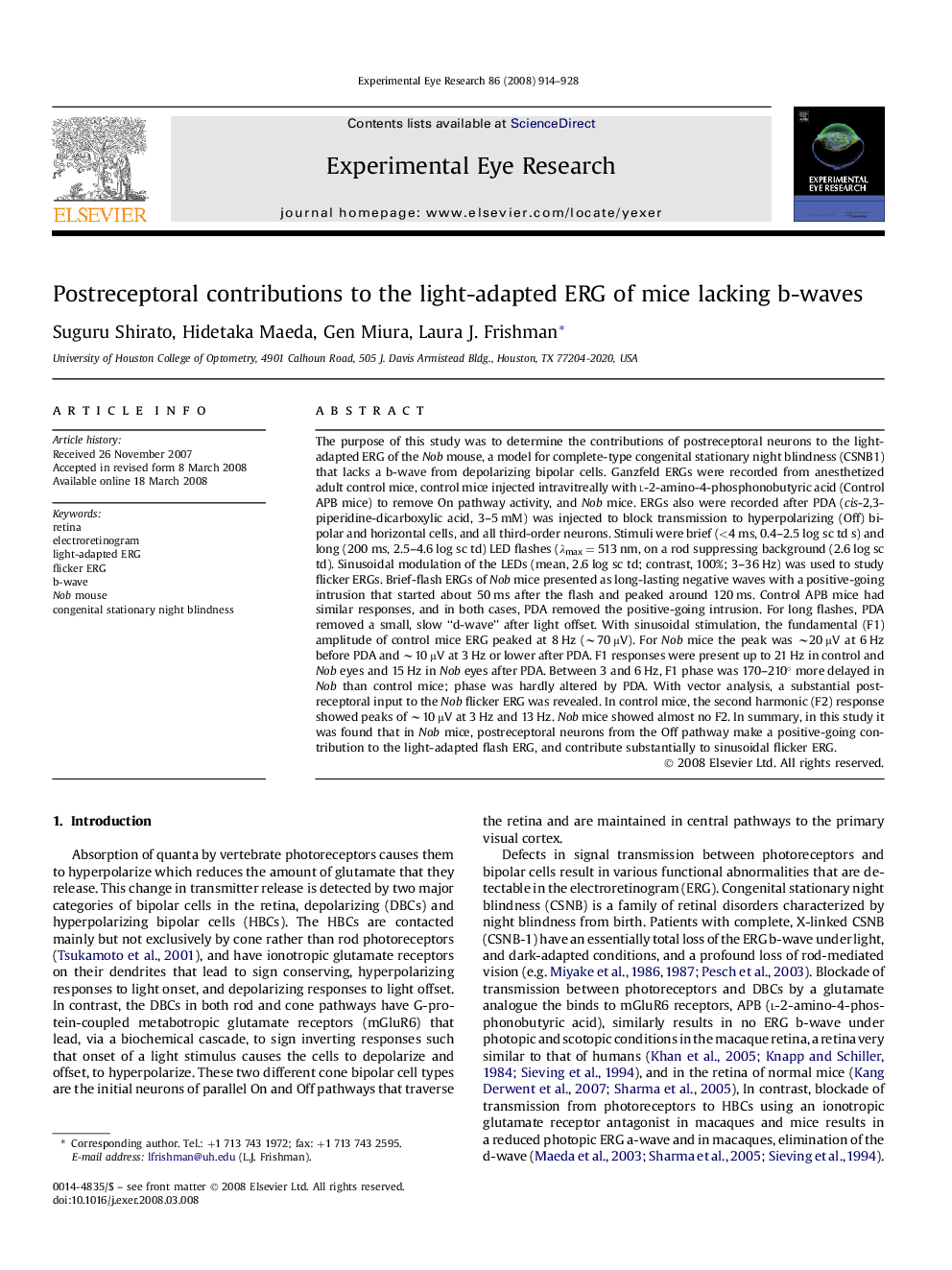| کد مقاله | کد نشریه | سال انتشار | مقاله انگلیسی | نسخه تمام متن |
|---|---|---|---|---|
| 4012082 | 1261178 | 2008 | 15 صفحه PDF | دانلود رایگان |

The purpose of this study was to determine the contributions of postreceptoral neurons to the light-adapted ERG of the Nob mouse, a model for complete-type congenital stationary night blindness (CSNB1) that lacks a b-wave from depolarizing bipolar cells. Ganzfeld ERGs were recorded from anesthetized adult control mice, control mice injected intravitreally with l-2-amino-4-phosphonobutyric acid (Control APB mice) to remove On pathway activity, and Nob mice. ERGs also were recorded after PDA (cis-2,3-piperidine-dicarboxylic acid, 3–5 mM) was injected to block transmission to hyperpolarizing (Off) bipolar and horizontal cells, and all third-order neurons. Stimuli were brief (<4 ms, 0.4–2.5 log sc td s) and long (200 ms, 2.5–4.6 log sc td) LED flashes (λmax = 513 nm, on a rod suppressing background (2.6 log sc td). Sinusoidal modulation of the LEDs (mean, 2.6 log sc td; contrast, 100%; 3–36 Hz) was used to study flicker ERGs. Brief-flash ERGs of Nob mice presented as long-lasting negative waves with a positive-going intrusion that started about 50 ms after the flash and peaked around 120 ms. Control APB mice had similar responses, and in both cases, PDA removed the positive-going intrusion. For long flashes, PDA removed a small, slow “d-wave” after light offset. With sinusoidal stimulation, the fundamental (F1) amplitude of control mice ERG peaked at 8 Hz (∼70 μV). For Nob mice the peak was ∼20 μV at 6 Hz before PDA and ∼10 μV at 3 Hz or lower after PDA. F1 responses were present up to 21 Hz in control and Nob eyes and 15 Hz in Nob eyes after PDA. Between 3 and 6 Hz, F1 phase was 170–210° more delayed in Nob than control mice; phase was hardly altered by PDA. With vector analysis, a substantial postreceptoral input to the Nob flicker ERG was revealed. In control mice, the second harmonic (F2) response showed peaks of ∼10 μV at 3 Hz and 13 Hz. Nob mice showed almost no F2. In summary, in this study it was found that in Nob mice, postreceptoral neurons from the Off pathway make a positive-going contribution to the light-adapted flash ERG, and contribute substantially to sinusoidal flicker ERG.
Journal: Experimental Eye Research - Volume 86, Issue 6, June 2008, Pages 914–928